Pros and cons of nine bioactive trace elements as tracers of modern and paleo-productivity
Horner and co-authors assess whether nine bioactive trace metals and their isotopes can be used as paleo-productivity proxies.
This section presents the GEOTRACES scientific activities.
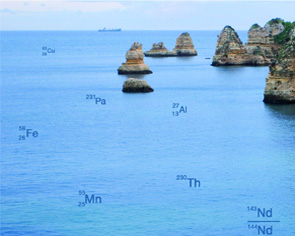
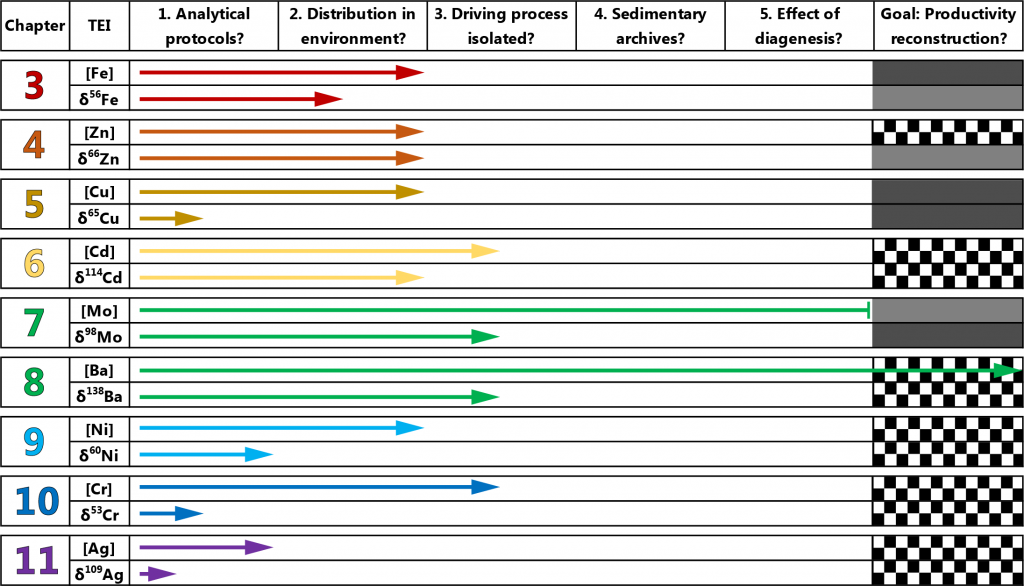
Horner and co-authors assess whether nine bioactive trace metals and their isotopes can be used as paleo-productivity proxies.
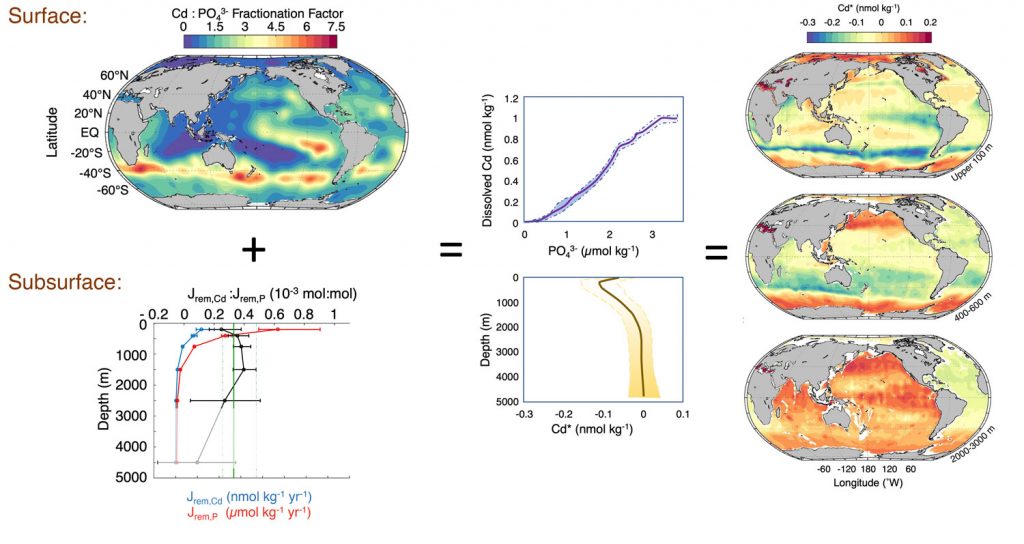
Roshan and DeVries explore the similarities and contrasts between oceanic cadmium and phosphate cycles using an Artificial Neural Network mapping technique and Ocean Circulation Inverse Model.

The findings demonstrate that glacial retreat and loss of ice-shelves may potentially result in increases in dissolved iron supply to surface waters downstream of large marine terminating glaciers in future.

Among other findings, authors find that the new opal flux is roughly a factor of two increase over previous estimates having important implications for the global silicon cycle.
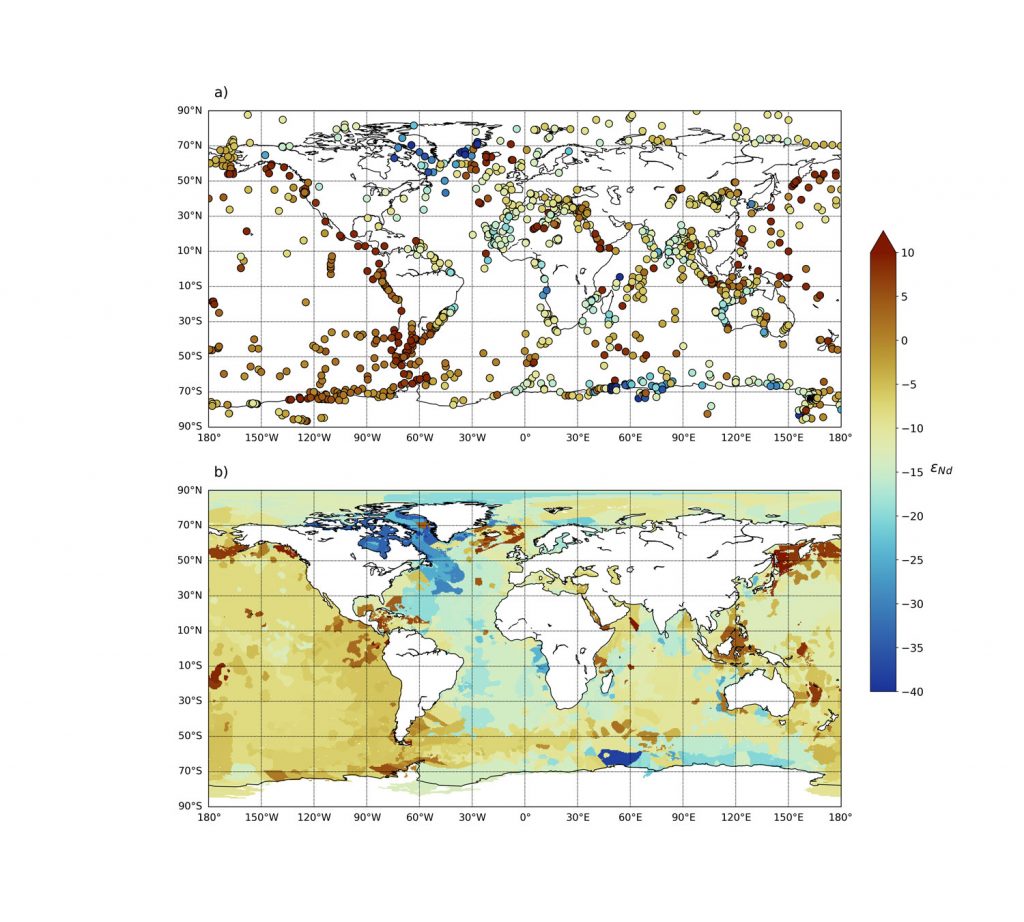
This new compilation and gridded datasets offer a concrete way forward to improve the application of neodymium isotopes as a useful tracer of ocean circulation.
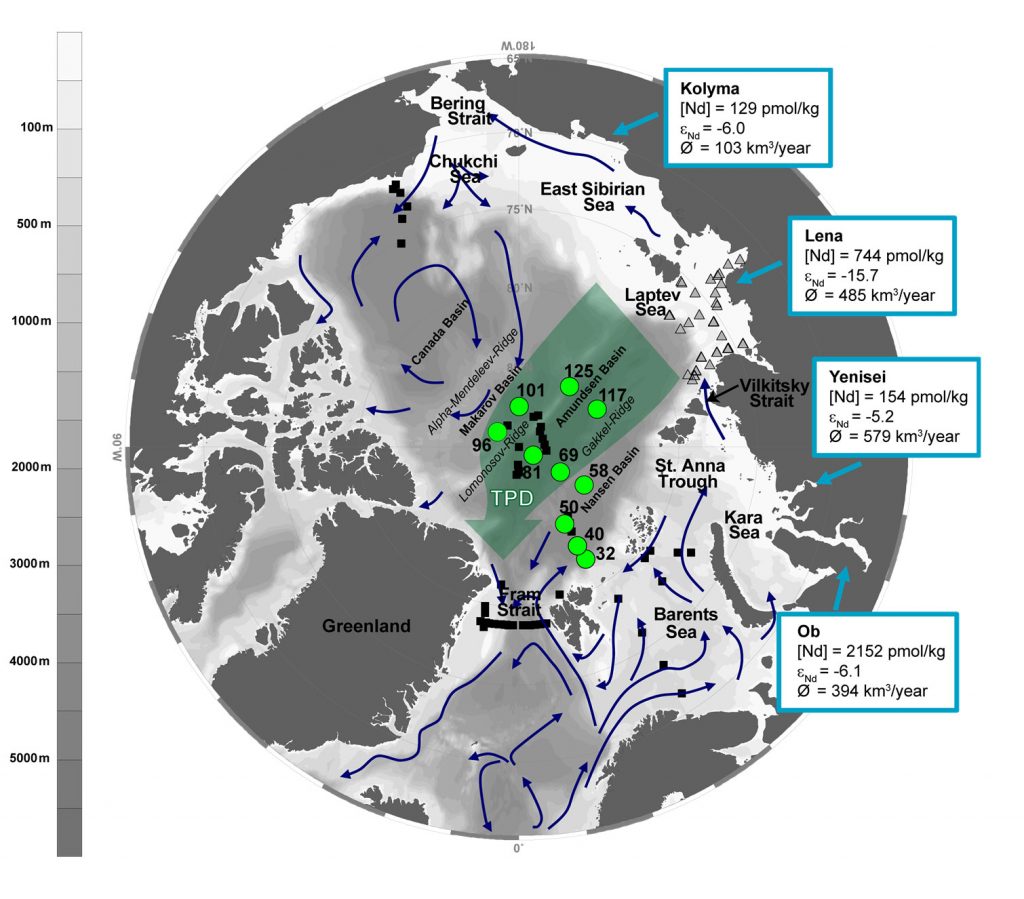
Paffrath and co-autors followed the relative contributions of the main Siberian rivers to the waters of the Transpolar Drift using neodymium parameters.

Roy-Barman and co-authors established the dissolution rates from Saharan dust reaching Mediterranean seawater.
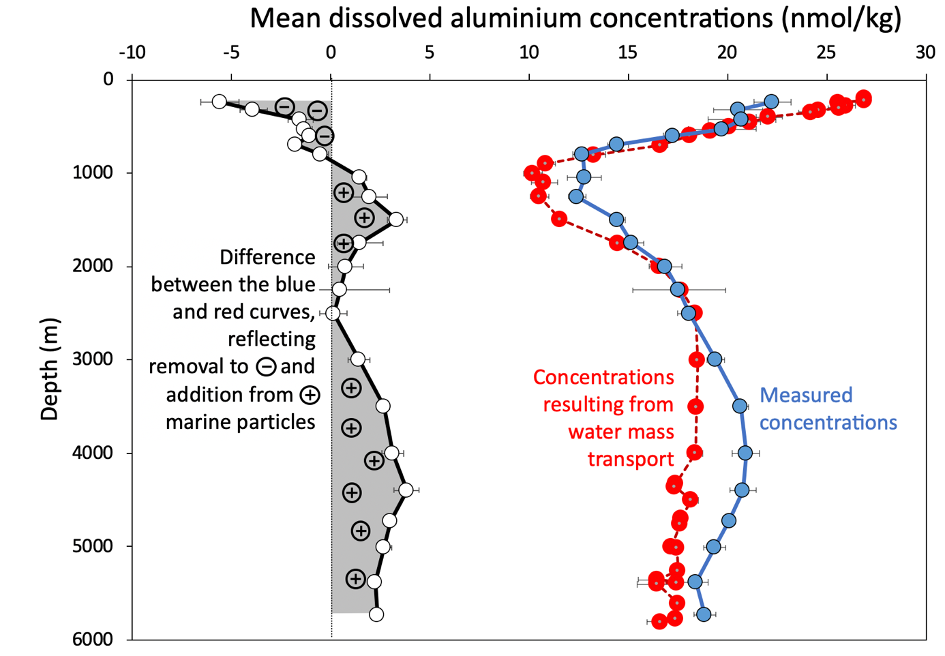
The results evidence that the effect of advection cannot be neglected in areas where a conjunction of significant horizontal dissolved aluminium gradients and significant horizontal currents is found.
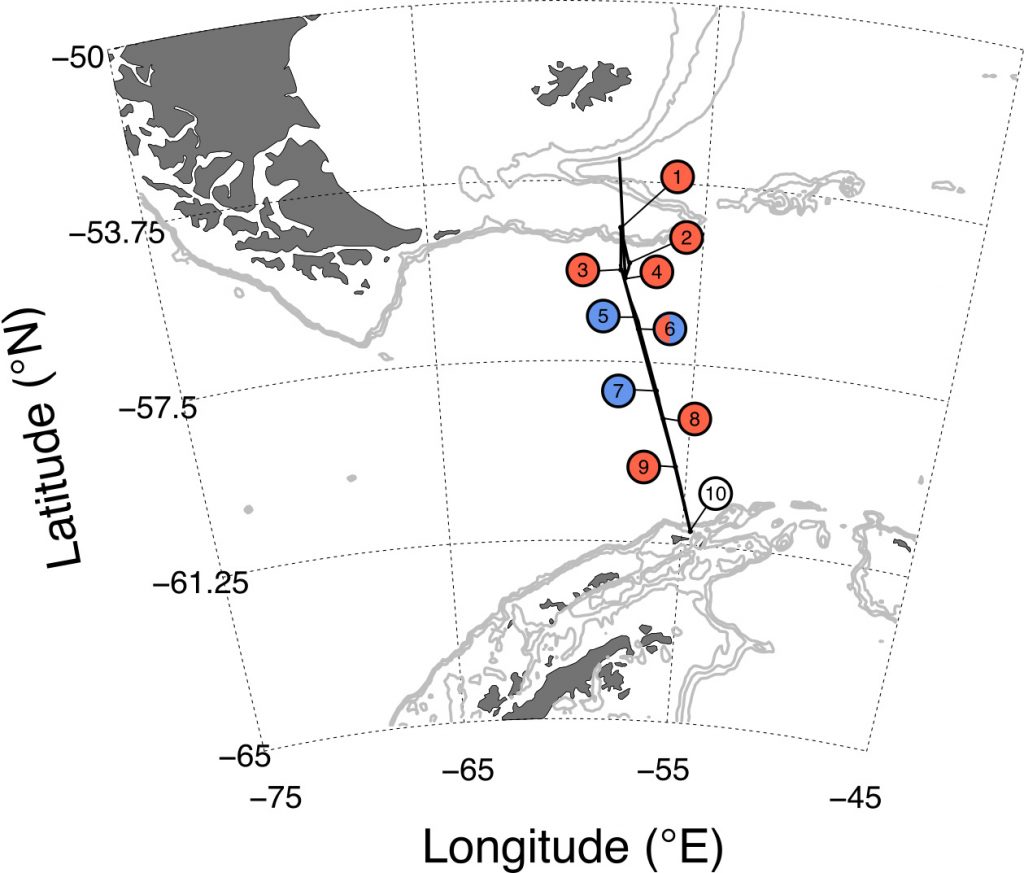
One of the main consequences of this work is that manganese should be included in ocean-climate models, more particularly to improve the accuracy of their predictions in this area.